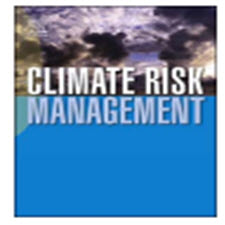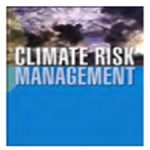توضیحات
ABSTRACT
Ranching involves complex decision-making and risk management in the face of uncertainty about climate conditions. The profitability and sustainability of ranching depend heavily on sufficient and timely rainfall for rangeland forage production. As a result, ranchers may either adopt conservative long-term stocking strategies as a hedge against drought or practice a more dynamic approach in which they vary stocking rates and supplemental feed in response to drought. Yet, some strategies require more information about climate risks than is often available to ranchers. We review the literature to draw out the drought management options as well as the tools and products for drought monitoring and early warning that are available to ranchers. We find that a large gap remains between the information needs of ranchers seeking to adapt dynamically to drought and the information that is available. Moreover, even when actionable information is available, it is unclear whether ranchers are optimally incorporating that information into their risk management decisions. Further research is needed to understand how to package existing information into risk management decision tools in a way that addresses cognitive and operational barriers to support timely decisions that will reduce the impact of droughton profits and the long-term sustainability of rangelands. Due to the multi-faceted nature of climate risk management in ranching, further study of ranching behavior and decisions has the potential to bring new insights into climate risk management and decision and risk theory far beyond the field of ranching and agriculture.
INTRODUCTION
Livestock ranching on semi-arid rangelands involves some of the most complex decision-making of any natural resource production and land use system. Ranchers continuously adjust to weather, climate, and range conditions that affect livestock production. They must also respond to weather-sensitive wings in feed prices and cattle markets. Studies of ranchers’ drought management strategies can offer lessons for complex decision-making in a variety of weather- and climate-sensitive sectors. Insights gleaned in thissetting have the potential to improve our understanding of universal problems in decision-making under uncertainty. Pastoralism has long been studied as a dynamic socio-ecological system (Galaty and Johnson, 1990), and as an exemplar of human adaptation to environmental variability.
چکیده
دامداری شامل تصمیم گیری پیچیده و مدیریت ریسک در صورت عدم اطمینان در مورد شرایط آب و هوایی است. سودآوری و پایداری گاوداری بستگی به میزان بارندگی کافی و موقتی برای تولید علوفه مرتعی دارد. به عنوان یک نتیجه، دامداران ممکن است استراتژی های بلند مدت ذخیره سازی را به عنوان حفاظت در برابر خشکسالی اتخاذ کنند و یا رویکرد پویای بیشتری را در نظر بگیرند که در آن میزان گاو دامداری و تغذیه مکمل در پاسخ به خشکسالی متفاوت است. با این حال، برخی از استراتژی ها نیاز به اطلاعات بیشتر در مورد خطرات آب و هوایی دارند که اغلب برای دامداران در دسترس است. ما ادبیات را بررسی می کنیم تا گزینه های مدیریت خشکسالی و همچنین ابزار و محصولات برای نظارت بر خشکسالی و هشدار اولیه که برای دامداران در دسترس هستند، مورد بررسی قرار گیرد. ما متوجه شدیم که فاصله بین نیازهای اطلاعات پرورش دهندگان به دنبال انطباق پویایی با خشکسالی و اطلاعات موجود است. علاوه بر این، حتی زمانی که اطلاعات عملیاتی در دسترس است، معلوم نیست که آیا پرورش دهندگان به طور مطلوب این اطلاعات را در تصمیمات مدیریت ریسک خود قرار می دهند. تحقیقات بیشتری برای درک چگونگی بسته شدن اطلاعات موجود در ابزار تصمیم گیری در مدیریت ریسک مورد نیاز است تا بتواند موانع شناختی و عملیاتی را برای پشتیبانی از تصمیمات به موقع که تاثیر سود دوفرون و پایداری طولانی مدت مراتع را کاهش دهد، مورد نیاز است. با توجه به ماهیت چند جانبه مدیریت ریسک زیست محیطی در دامداری، مطالعه بیشتر در مورد رفتار و تصمیم گیری های دامداری، بالقوه است که بینش جدیدی را در مورد مدیریت ریسک پذیری در محیط زیست و نظریه تصمیم و ریسک فراتر از حوزه دامداری و کشاورزی.
مقدمه
دامداری دام در مراتع نیمه خشک شامل برخی از پیچیده ترین تصمیم گیری در مورد هر گونه تولید منابع طبیعی و سیستم استفاده از زمین است. رانچرها به طور مداوم به شرایط آب و هوایی، آب و هوا و شرایط دامنه ای که بر تولید دام تاثیر می گذارد، تنظیم می شوند. آنها همچنین باید به بال های حساس به هوا در قیمت های خوراک و بازار گاو پاسخ دهند. مطالعات استراتژي هاي مديريت خشكسالي پرورش دهندگان مي تواند درس هايي براي تصميم گيري هاي پيچيده در بسياري از بخش هاي حساس به آب و هوا و محيط زيست ارائه دهد. بینش هایی که در این مجموعه گنجانده شده اند، توانایی درک ما در مورد مشکلات جهانی در تصمیم گیری را در شرایط نامطمئن بهبود می بخشد. گاوداری به عنوان یک سیستم اجتماعی-زیست محیطی پویا (Galaty and Johnson، 1990) و به عنوان نمونه ای از سازگاری انسان با تغییرات زیست محیطی مورد مطالعه قرار گرفته است.
Year: 2018
Publisher : ELSEVIER
By : Trisha R. Shrum, William R. Travis, Travis M. Williams, Evan Lih
File Information: English Language/ 16 Page / size: 604 KB
سال : 1396
ناشر : ELSEVIER
کاری از : Trisha R. Shrum، William R. Travis، Travis M. Williams، Evan Lih
اطلاعات فایل : زبان انگلیسی / 16 صفحه / حجم : KB 604









نقد و بررسیها
هنوز بررسیای ثبت نشده است.